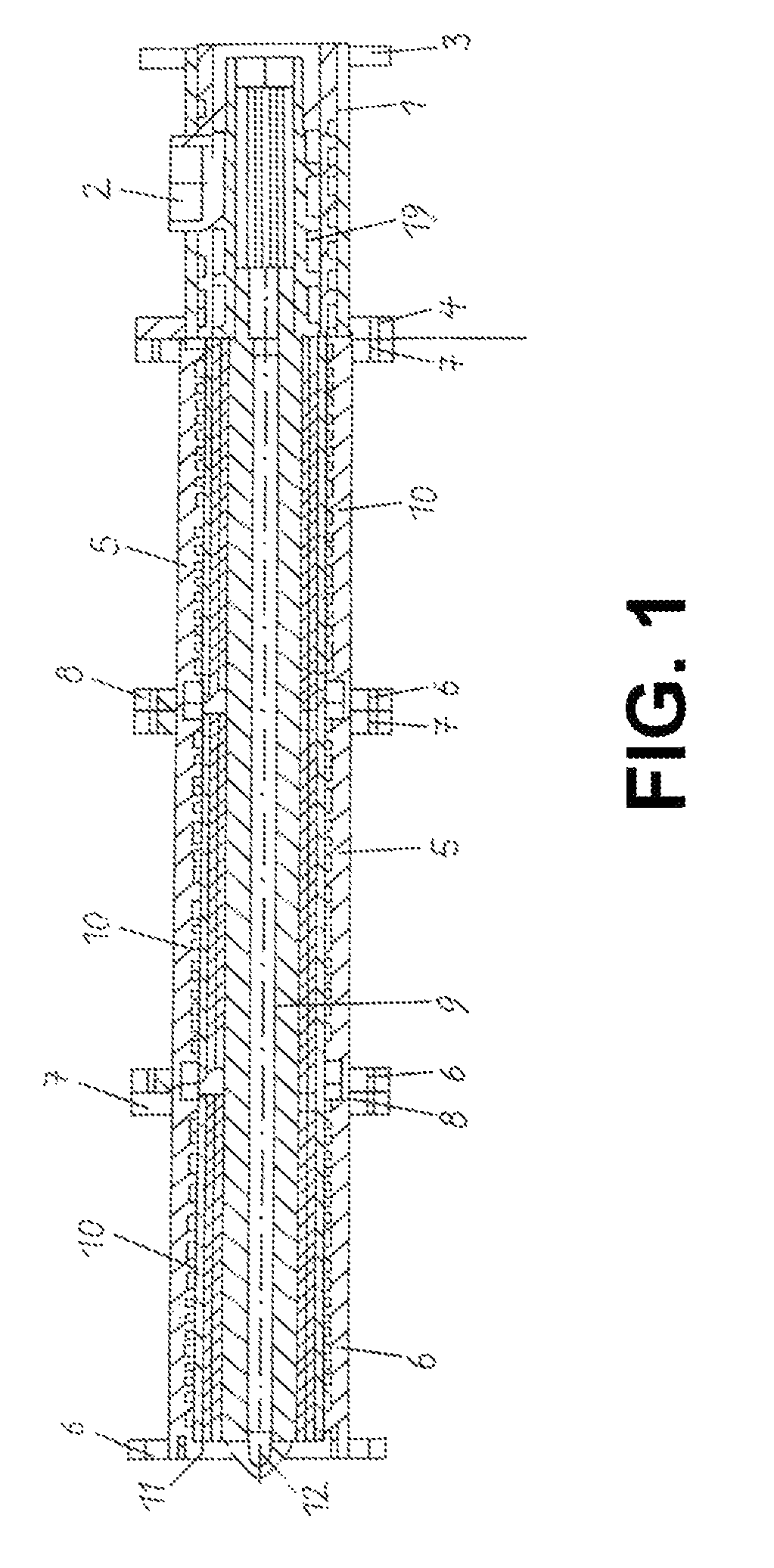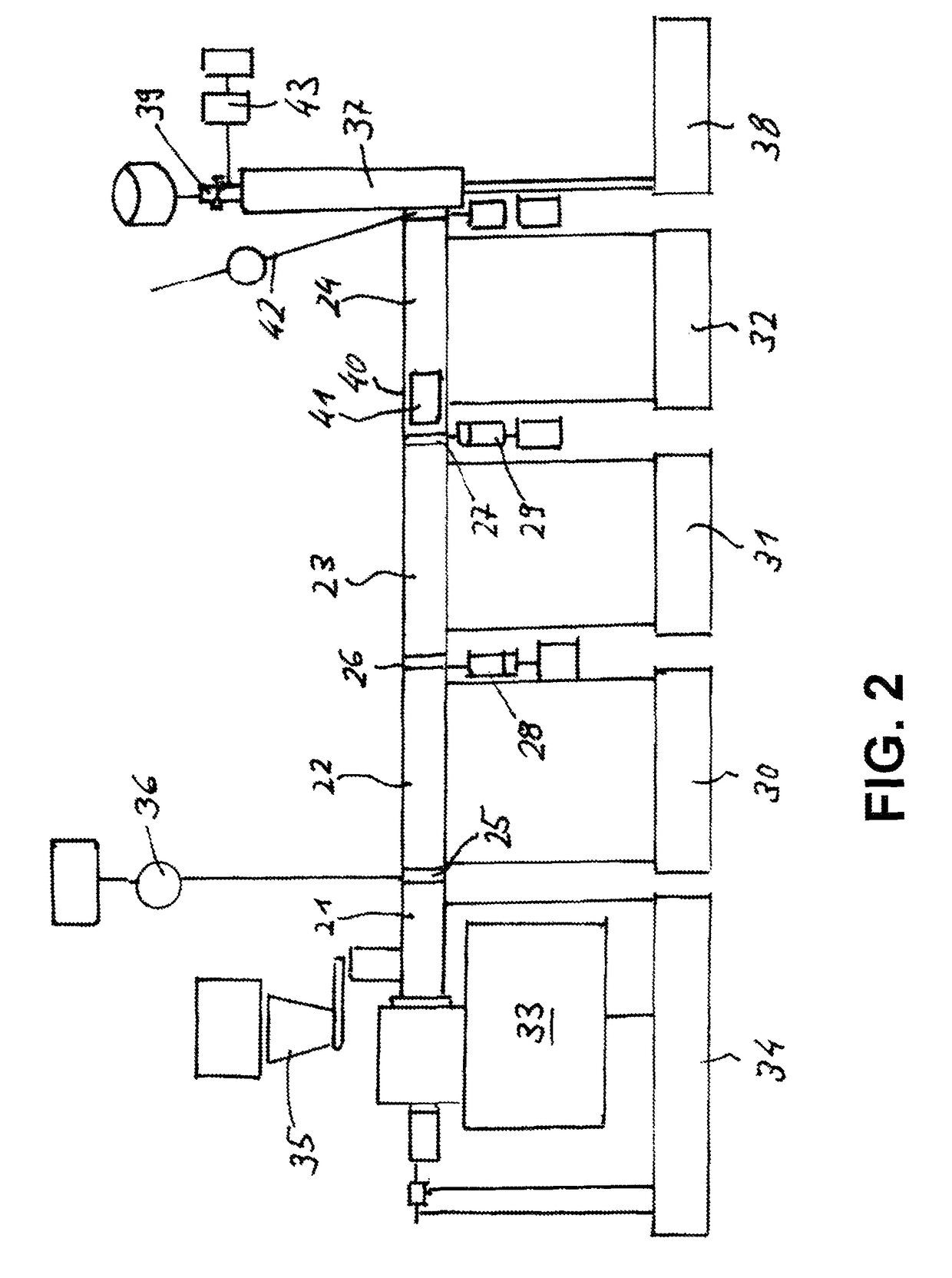Planetary roller extruder with planet spindles and contact ring
a technology of contact ring and planetary roller, which is applied in the direction of transportation and packaging, rotary stirring mixers, food shaping, etc., can solve the problems of planetary roller extruders that are never fully filled with extrusion material, roller parts cannot be withstanded, and the planetary roller extruders are difficult to prevail
- Summary
- Abstract
- Description
- Claims
- Application Information
AI Technical Summary
Benefits of technology
Problems solved by technology
Method used
Image
Examples
Embodiment Construction
[0068]FIG. 1 shows an extruder with an overlong planetary roller part 11 and a feeding screw 1. The planetary roller part is composed of three planetary roller extruder modules with a conjoint central spindle 9. Each module comprises an outer housing 5 in pipe shape which shows flanges 6 and 7 at both ends. At the flanges 6 and 7 the modules are screwed together. Thereby the housings 5 will be centered by means of cantering rings. The cantering rings are inserted into corresponding recesses of the housing flanges.
[0069]To each planetary roller extruder module belongs also a liner. The liner is located inside in housing 5. During assembly the liners will be inserted into the housings. In at least one possible embodiment of the present application, this is done before the screwing of the flanges 6 and 7. For this the cantering rings are furnished with a boring which is equal to the boring of the housing.
[0070]Between the liners there is one stop ring 8 each located. The stop ring hold...
PUM
| Property | Measurement | Unit |
|---|---|---|
| pitch diameter | aaaaa | aaaaa |
| pitch diameter | aaaaa | aaaaa |
| pitch diameter | aaaaa | aaaaa |
Abstract
Description
Claims
Application Information
 Login to View More
Login to View More - R&D
- Intellectual Property
- Life Sciences
- Materials
- Tech Scout
- Unparalleled Data Quality
- Higher Quality Content
- 60% Fewer Hallucinations
Browse by: Latest US Patents, China's latest patents, Technical Efficacy Thesaurus, Application Domain, Technology Topic, Popular Technical Reports.
© 2025 PatSnap. All rights reserved.Legal|Privacy policy|Modern Slavery Act Transparency Statement|Sitemap|About US| Contact US: help@patsnap.com



